Building Cornell University Library’s Collections
Games, Recreation and Sport
The History of Games
The Division of Rare and Manuscript Collections features a growing collection on the history of games. These activities, while primarily created and played for entertainment or enjoyment purposes, also convey significant social and historical information. With varying degrees of transparency of purpose, games often work to instill values, reinforce cultural assumptions and stereotypes, advance political or social agendas, and promote educational goals. Cornell’s preeminent collections on the Civil War, woman suffrage and human sexuality, for example, all include games that inform an understanding of the history of those topics.
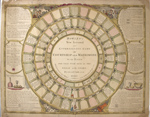 |
Bowles’s New Invented and Entertaining Game of Courtship and Matrimony. London: Printed for Bowles & Carver, [1795?]. [zoom] This early board game, played with either cards or dice, requires players to traverse the pitfalls of flirtation, courtship, and engagement which are represented by “quotations and mottos from celebrated songs.” Class of 1956 Rare Book Endowment Fund |
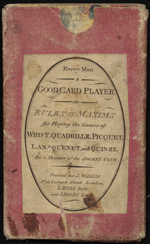 |
Every Man a Good Card Player. London, 1785. [zoom] Rule books for card games provide players with hints and strategies for winning. This example includes the rules for whist, quadrille, piquet, lansquenet, and quinze. Proficiency at cards was an important social skill in late-eighteenth century England. Class of 1956 Rare Book Endowment Fund |
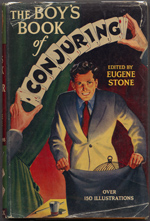 |
Eugene Stone, ed. The Boy’s Book of Conjuring. London: Ward, Lock & Co., Ltd., 1956. [zoom] Class of 1956 Rare Book Endowment Fund |
| View a photo of this exhibition case | |
Recreation and Sport
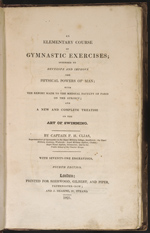 |
Peter Heinrich Clias. An Elementary Course of Gymnastic Exercises Intended to Develop and Improve the Physical Powers of Man. London, 1825. [zoom] | View other images: 1 In the early nineteenth century, American educators and physicians began to recognize and promote the link between mental health and physical activity. A growing collection of materials in Cornell’s Division of Rare and Manuscript Collections maps the evolution of American attitudes to physical fitness, from early works on calisthenics and gymnastics to contemporary works that document today’s preoccupation with body shape and image. Peter Clias was one of the many authors who influenced the integration of exercise into elementary education. Born in Boston, Clias became a pioneer of gymnastics in France, England, and Switzerland. This work, a translation from the French, describes hundreds of exercises. Class of 1956 Rare Book Endowment |
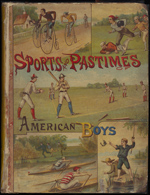 |
Henry Chadwick. The Sports and Pastimes of American Boys: a Guide and Text-Book of Games of the Play-Ground, the Parlor, and the Field. New York: George Routledge and sons, ca. 1884. [zoom] By the last quarter of the nineteenth century, most American educators assumed that a combination of physical recreation and mental education was the key to moral and mental health. This compendium describes all kinds of sports and games, including team sports, board games, outdoor activities such as boating, roller skating, and canoeing, and schoolyard standards such as tug-of-war, tag, and ring-toss. Class of 1956 Rare Book Endowment |
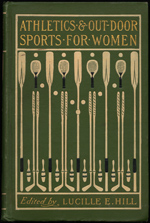 |
Lucille E. Hill, ed. Athletic and Outdoor Sports for Women. New York & London: The Macmillian Company, 1903. [zoom] | View other images: 1 At the time this work was first published, competitive team sports were considered inappropriate for women, as they were thought to develop “unwomanly” qualities. But the latter part of the nineteenth century saw a growing acceptance of exercise for women and girls, if done in “moderation” to enhance female “health and beauty.” This book serves as a guide for women interested in pursuing sports, such as swimming, golf, lawn tennis, skating, and bowling. Class of 1956 Rare Book Endowment |
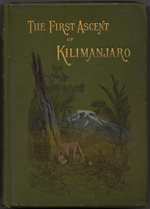 |
Hans Meyer. Across East African Glaciers: An Account of the First Ascent of Kilimanjaro. London: G. Philip & Son, 1891. [zoom] | View other images: 1 Cornell’s growing collection of books on mountaineering documents the human impulse to test the limits of physical endurance. This landmark work on the history of climbing details the undisputed first ascent to the summit of Mount Kilimanjaro, the highest point in Africa. Class of 1956 Rare Book Endowment |
| View a photo of this exhibition case | |